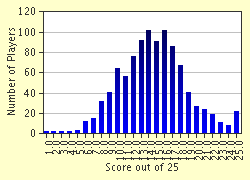Quiz Answer Key and Fun Facts
1. A polysaccharide made from seaweed used to culture bacteria and fungi.
2. A slow moving or sluggish creek that often runs through marshy ground.
3. A waxy membrane near the nostrils on the beak of some birds.
4. A generator. It normally creates direct current electricity.
5. Illness found primarily among certain group of people or plants and found primarily in one region.
6. A unit of frequency equal to 1 trillion Hertz.
7. Small granular pellets of snow due to riming (adding a thin layer of ice due to condensation then freezing of water vapor.)
8. What is the unit of inductance when a current varies at 1 ampere/second and creates an EMF of 1 volt?
9. A number smaller than any positive magnitude yet larger than zero.
10. An exceedingly hot wind from the Sahara Desert that blows into Egypt (usually) in the spring.
11. The jagged edge of a petal of a flower that forms a fringe.
12. A looping turn on a river running along level ground.
13. A solution that contains one gram-equivalent of solid for every liter of liquid.
14. A rock that is made up of little spheres of calcium carbonate.
15. The tubes in a vascular plant through which nutrients pass.
16. A fifth-degree polynomial.
17. Similar to a root, this plant structure is a creeping underground stem.
18. An iron rich black tourmaline.
19. The unit of pressure that supports one millimeter of a column of mercury.
20. The dark central section of an astronomical body's shadow.
21. The waxy covering of an embryo that protects it from amniotic fluid.
22. A diagram that displays various information about the winds at a location.
23. An anatomical object shaped like a sword, like the cartilage at the end of the sternum.
24. A rare-earth metallic element. Atomic number 70. Melts at 1097 degrees K and boils at 1467 degrees K.
25. A fertilized egg.
Source: Author
tralfaz
This quiz was reviewed by FunTrivia editor
crisw before going online.
Any errors found in FunTrivia content are routinely corrected through our feedback system.

